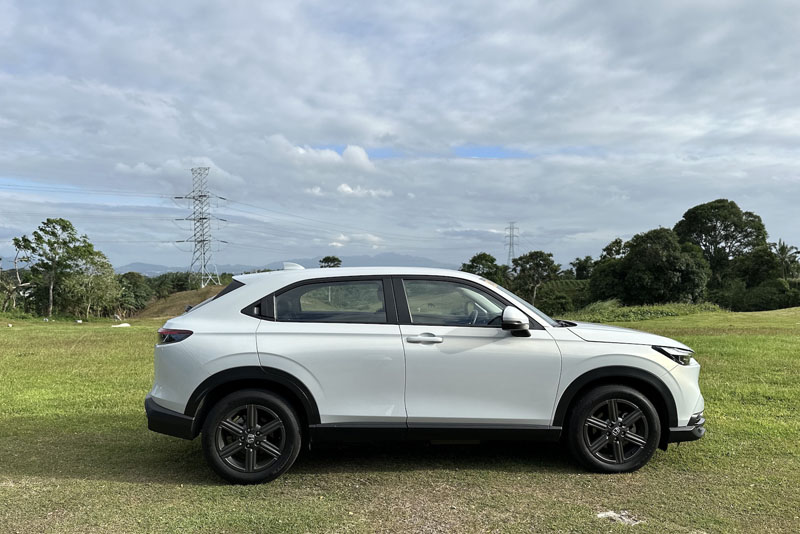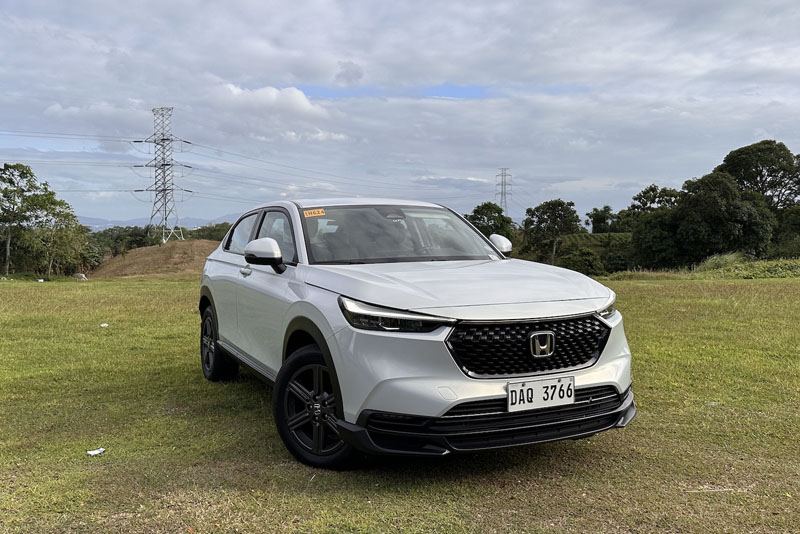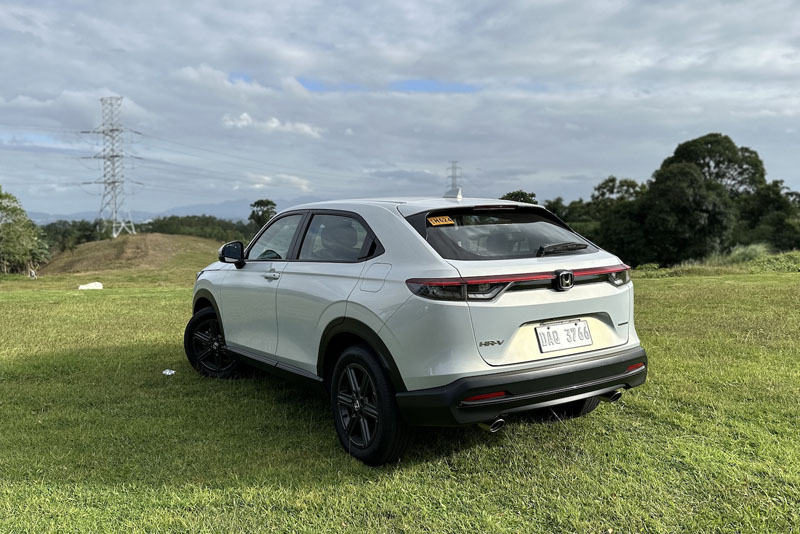The Honda HR-V's inside and out appeal
Honda HR-V 1.5 V Turbo CVT with Sensing

I love the evolution of the HR-V. From its second-generation curvy and petite body, it has grown into its own and distinguished itself as a solid crossover model instead of looking like a baby CR-V.

My title is a dead giveaway of what I feel about the latest version of Honda’s Hi-Rider Revolutionary Vehicle (HR-V). Even at first glance, if not for the badge, it is tough to see the affinity to its predecessor because of its new shape: a flatter body, lower roofline, and higher stance.
First of all, this Premium Opal color is striking. It is not so white that it gets dirty quickly, and that pearl white-ish hue exudes a certain warmth that makes it very easy on the eyes. It was generous of Honda to throw in gray alloy 17-inch wheels that perfectly contrast the exterior.

Second, this design — as the kids say — is fire. It redefines itself by reshaping the body, and you get a smoother surface with more length and width than before. It has a sleek façade composed of a new black-mesh grille and slim LED headlights with LED daytime running lamps. Instead of a proper front bumper, Honda gives it a spoiler below the slats for better cooling and styling. The roof is lower than before, and the rake of the rear glass is more acute, which gives it the right to wear a shark fin antenna and rear roof spoiler.
I prefer thicker body cladding for a sportier appearance, and the engineers could do a better job hiding the muffler, which you can see without bending over.

Its smart key allows access to the cabin by simply touching the door handle. The all-black interior does not look dull and monotonous because of silver accents. Also, it looks posh because of the soft-touch surfaces on the cockpit, panels, and center console cover, while the plastics are not cheap. The designers did a great job of creating functional spaces across the cockpit. The top of the dashboard is flat, which lets you put stuff on it, and there are two nooks to accommodate small devices just in front of the gear shifter.
It has two vivid and colorful digital screens: a seven-inch display in the instrument cluster, and an eight-inch infotainment screen. Devices can connect via Bluetooth or the four USB ports (two in front and two at the rear). My only gripes are the speakers should be better, while the door pockets are too narrow. It has a dual-zone climate control system with rear vents and an air diffusion system, but I have yet to feel the real benefit over seven days of seat time. Despite this crossover’s limited dimensions, the ingenious ULT (utility, long, tall) leather seats allowed easy ingress of my new high chair and a few grocery bags.

A 1.5-liter turbo engine propels the vehicle forward by sending 177-PS and 240-Nm of torque to the front wheels via a continuously variable transmission. Acceleration is smooth regardless of throttle pressure, so it was always a relaxed ride inside the HR-V. The power output is modest by segment standards, but the gear ratios make it responsive in city and highway driving. Overtaking does not stress the engine much. Even at 100 km/h, it only hovers at around 1,700 RPM.
Noise, vibration, and harshness dampening are excellent, revealing the inadequacies of the eight-speaker system to deliver a fuller sound. Like all Hondas, it handles well. The steering response is intuitive, and rollover resistance is high, which means it sweeps around curves gracefully.
One of the best features of new Honda models, including this HR-V variant, is Sensing. It is a suite of safety features that help assist the driver autonomously, whether it is cruise control, braking, staying in the lane, the high beams, etc. It makes driving less stressful and safer.
Honda PH tacked an extra ₱50,000 to the HR-V 1.5 V Turbo CVT with Sensing. It now retails for ₱1.649 million. It would have been a more appealing model at a little over 1.5+ million, but I believe its collective features — design, cabin, amenities, and Honda Sensing — justify the increase.